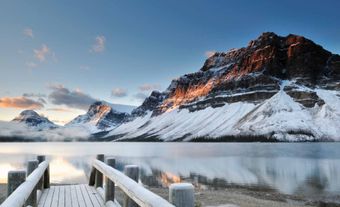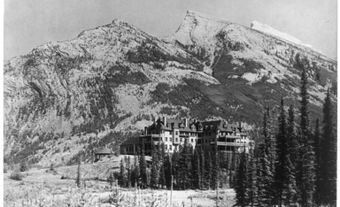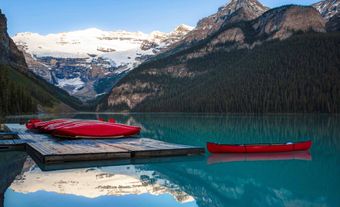Banff, Alberta, incorporated as a town in 1990, population 8,305 (2021 census), 7,851 (2016 census). The Town of Banff is located on the Bow River in the Canadian Rockies, a UNESCO World Heritage Site, 128 km west of Calgary.
History
Founded in 1883 near a proposed Canadian Pacific Railway tunnel site, the first town, 3 km from present-day Banff, was known as "Siding 29." Renamed by Lord Strathcona (Donald Smith) on 25 November 1883 for his hometown in Scotland and relocated three years later, the new townsite grew to 300 residents that first year. Banff finally became a self-governing municipality within Alberta on 1 January 1990.
Banff's development, which is controversial because of the fragility of its environment, has always been determined by the federal government, tourism and the railway. In 1885, the Banff Hot Springs Reserve was formed on 4 hectares of land around the local hot springs, and in 1887 a major expansion of park land occurred with the formation of the Rocky Mountains Park, renamed Banff National Park in 1930. The park, centred around Banff, was spurred by the most significant event in the town's history, the opening of the Banff Springs Hotel on 1 June 1888. Subsequent winter recreational developments and Banff's symbol as Canada's premiere all-season tourism destination encourage over 3 million individuals annually to visit the park.
Home to famous Albertans, such as explorer Mary Schaffer Warren, Walter J. Phillips, Earle Birney, artist Carl Rungius, as well as Dr Robert G. Brett, lieutenant-governor of Alberta (1915-1925) and owner of a sanitorium hotel, Banff also early established itself as one of Alberta's leading cultural centres. This richness was further evidenced by the establishment of the Banff Centre School of Fine Arts in 1933 and later the Whyte Museum of the Canadian Rockies.


 Share on Facebook
Share on Facebook Share on X
Share on X Share by Email
Share by Email Share on Google Classroom
Share on Google Classroom



